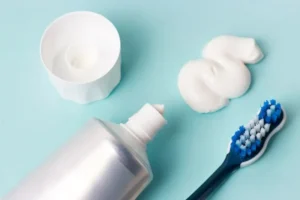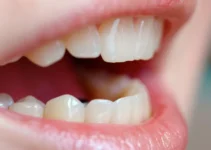Teeth whitening gel is a popular choice for those looking to brighten their smile from the comfort of their own home. This gel typically contains bleaching agents like hydrogen peroxide or carbamide peroxide that work to remove surface stains and deeper discoloration on your teeth. While it can be very effective, it’s important for users to follow the instructions carefully to avoid gum irritation and enamel damage. Regular use as directed can lead to significantly whiter teeth, enhancing your confidence and overall oral health.
Benefits of Teeth Whitening Gel
Teeth whitening gel has become increasingly popular for individuals looking to enhance their smile. This non-invasive treatment offers a variety of benefits that contribute to both aesthetic and psychological well-being. Here’s a comprehensive look at its advantages.
Whether you’re preparing for a major event or simply want to improve your everyday appearance, teeth whitening gel presents an effective solution. Its popularity stems from the fact that it delivers noticeable results quickly and safely.
Enhanced Aesthetics
One of the primary reasons people opt for teeth whitening gel is the significant improvement in their aesthetic appearance. A brighter smile can make a person look more youthful and vibrant. Studies have shown that whiter teeth are often associated with good hygiene and well-being.
This enhancement goes beyond just looks; it can also affect how others perceive you. A brighter smile can create a positive first impression, whether you’re at a job interview or meeting new people. Whiter teeth can make you look more approachable and friendly, thereby improving social interactions.
Boost in Confidence
Another considerable benefit of using teeth whitening gel is the boost in self-confidence that comes with a more attractive smile. Feeling good about your appearance can positively impact various aspects of your life, from relationships to professional settings. Several psychological studies indicate that individuals with whiter teeth are often more confident and outgoing. This newfound confidence can help in overcoming social anxiety and can lead to more engaging social experiences.
Moreover, the positive change in your appearance can motivate you to maintain better oral hygiene practices, perpetuating a positive cycle of good health and self-esteem.
Quick and Effective Results
One of the standout features of teeth whitening gel is its ability to offer quick and effective results. Unlike other cosmetic treatments that may require multiple sessions, teeth whitening gel can often show noticeable improvements after just one application.
This efficiency makes it an ideal option for those with busy schedules who cannot commit to prolonged treatments. The convenience of at-home kits provides an additional layer of ease, allowing you to fit the treatment into your routine without major disruptions.
In addition, the effectiveness of modern teeth whitening gels has been supported by numerous clinical studies. These gels often contain active ingredients like hydrogen peroxide or carbamide peroxide, which have been proven to remove stains and brighten teeth effectively.
If you found this information helpful, consider exploring other articles that delve into advanced dental treatments and their benefits. Stay informed to make the best choices for your dental health.
How to Use Teeth Whitening Gel
Understanding Teeth Whitening Gel
Teeth whitening gels are a popular choice for those looking to achieve a brighter smile. These gels contain active ingredients, such as hydrogen peroxide or carbamide peroxide, which penetrate the enamel and break down the discoloration. It’s essential to understand how these compounds work to use them effectively and safely. The whitening process involves the following steps:
- The gel is applied to the teeth, often using a custom-fitted tray.
- The active ingredients in the gel penetrate the enamel and reach the discolored molecules.
- A chemical reaction occurs, breaking down the stains and leaving the teeth whiter and more luminous.
Studies have shown that these whitening agents can significantly improve the appearance of teeth over a short period. However, users should be aware of potential side effects, such as tooth sensitivity and gum irritation, and follow usage instructions carefully.
Application Techniques
For optimal results, it’s crucial to apply teeth whitening gel correctly. Here are some steps to ensure effective application:
- Prepare the Teeth: Before applying the gel, thoroughly brush and floss your teeth to remove any debris. Dry your teeth to ensure the gel adheres properly.
- Apply the Gel: Using the provided applicator or a cotton swab, apply a small amount of gel to the front surfaces of your teeth. If using a tray, fill the tray with the gel and place it in your mouth, ensuring it fits snugly.
- Duration: Follow the recommended exposure time, which typically ranges from 15 minutes to a few hours, depending on the product’s strength and your dentist’s advice. Overuse can lead to increased sensitivity.
- Rinse and Clean Up: After the application time is complete, remove the tray and rinse your mouth thoroughly with water. Brush your teeth gently to remove any residual gel.
Following these steps can help maximize the effectiveness of teeth whitening gels while minimizing any potential discomfort. It’s also advisable to avoid consuming staining foods and beverages, such as coffee or red wine, immediately after the whitening process.
Aftercare and Maintenance
Maintaining your newly whitened teeth requires continued effort. Here are some tips to keep your smile bright:
- Oral Hygiene: Maintain a rigorous oral hygiene routine, including brushing at least twice a day and flossing daily.
- Regular Check-ups: Visit your dentist for regular check-ups and cleanings to remove surface stains and plaque build-up.
- Avoid Staining Agents: Limit your intake of foods and drinks known to stain teeth, and consider using a straw to reduce contact with your teeth.
- Touch-Up Treatments: Depending on your dentist’s advice, use touch-up whitening treatments periodically to maintain the desired shade.
By following these aftercare steps, you can prolong the effects of your teeth whitening treatment and enjoy a dazzling smile for longer. For more detailed articles on oral health and advanced dental treatments, be sure to explore our other blog posts.
Important Considerations
When contemplating dental implants or bone regeneration procedures, there are numerous important considerations to keep in mind. Each patient’s situation is unique, requiring individualized treatment plans tailored to their specific needs and conditions. Awareness of these considerations can help ensure a successful outcome.
From selecting the right products for your specific condition to understanding potential side effects, and the utmost importance of consulting with a dental professional – the decisions you make play a crucial role in the success and longevity of the treatment.
Choosing the Right Product
One of the most crucial factors to consider is selecting the appropriate product for your dental needs. This includes choosing between types of implants, such as titanium or zirconia, and specific bone graft materials like autografts, allografts, xenografts, or synthetic options. The choice will depend on various factors including biocompatibility, aesthetic preferences, and your body’s specific requirements.
For instance, titanium implants are widely recognized for their biocompatibility and strength. Nevertheless, some patients may prefer zirconia implants for aesthetic reasons, as they match the natural tooth color better. Similarly, the choice of bone graft material can significantly influence healing times and success rates. Studies have shown that autografts, which use the patient’s own bone, tend to have higher success rates due to superior immune compatibility.
Before making any decisions, it’s important to discuss all available options with your dental professional to determine which products align best with your specific needs.
Potential Side Effects
Another significant consideration involves understanding the potential side effects associated with dental implants and bone regeneration treatments. While these procedures are generally safe and highly successful, they are not without risks. Common side effects can include infection, nerve damage, and sinus problems.
Infections can occur if bacteria enter the implant site, leading to complications. Nerve damage can result in persistent numbness, tingling, or pain in the gums, lips, or chin. Sinus problems may arise if dental implants placed in the upper jaw protrude into the sinus cavities.
To mitigate these risks, it’s essential to follow your dentist’s post-operative care instructions meticulously. This may include maintaining excellent oral hygiene, taking prescribed antibiotics, and attending follow-up appointments to monitor the healing process.
Consulting with a Dentist
The most important step in ensuring the success of your dental implant or bone regeneration procedure is extensively consulting with a qualified dentist. A professional consultation will provide a comprehensive evaluation of your oral health, ensuring that the selected treatment plan is appropriate for you. During the consultation, your dentist will review your medical history, conduct a thorough oral examination, and possibly suggest diagnostic imaging to assess bone density and structure. This evaluation is crucial in identifying potential issues that could affect the success of the treatment.
Moreover, a skilled dentist can guide you through the complexities of the procedure, setting realistic expectations, and addressing any concerns you may have. This professional guidance is invaluable in helping you make informed decisions about your dental health.
In conclusion, while there are many important considerations when it comes to dental implants and bone regeneration, careful planning and consultation with your dentist can help ensure a positive outcome. For more detailed information on related topics, read our other articles on dental health and advancements in implantology.
Common Questions About Teeth Whitening Gel
If you’re considering using teeth whitening gel, you might have some questions about its safety, effectiveness, and usage. Here are answers to some common queries to help you make an informed decision.
How often should I use teeth whitening gel for optimal results?
The frequency of use for teeth whitening gel depends on the product’s formulation and strength. Most over-the-counter gels suggest use once or twice a day for a period of one to two weeks. It’s important to follow the product’s instructions or consult your dentist to prevent overuse, which can lead to tooth sensitivity or enamel damage.
Is teeth whitening gel safe for everyone?
Teeth whitening gel is safe for most users when used as directed. However, people with gum disease, sensitive teeth, or damaged enamel should consult their dentist before using whitening products. Additionally, pregnant or nursing women are generally advised to postpone teeth whitening procedures.

My name is Salman Kapa, a 73-year-old expert in bone regeneration and dental implantology. With decades of experience in the field, I am dedicated to advancing our understanding of oral health and hygiene. Through my research and writing, I aim to contribute to the development of innovative solutions in dental care.




